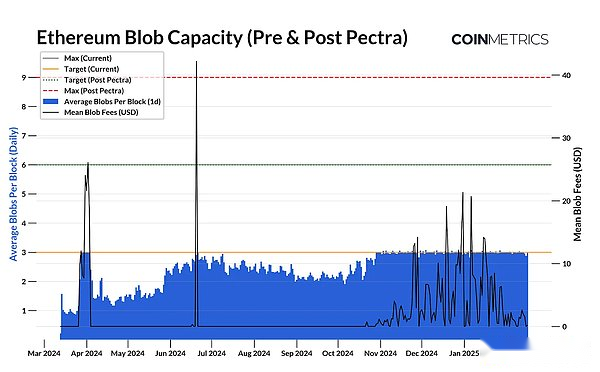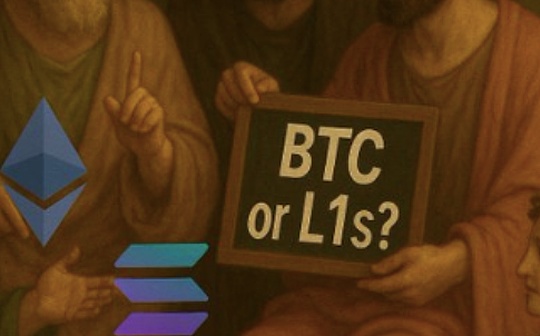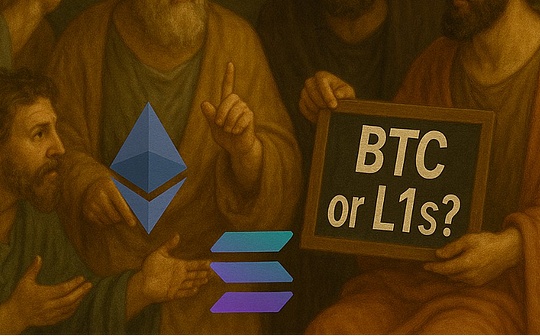
Author: Tanay Ved Source: Coin Metrics Translation: Shan Oppa, Bitchain Vision
Key Points
Pectra, the next important upgrade of Ethereum, introduced changes to the execution layer (Prague) and consensus layer (Electra).The test network is expected to be launched in February and March, and mainnet activation is expected to take place in April.
The upgrade introduces key improvements to staking, Layer-2 scalability, and user experience (UX) to lay the foundation for future changes.
Key changes include higher validator staking restrictions, flexible staking withdrawals, enhanced account abstraction and increased blob throughput, which help improve network efficiency and security.
introduce
After 29 months after The Merge, 22 months after Shapella and 11 months after Dencun, we ushered in the next major upgrade of Ethereum—the Pectra Hard Fork.As the world’s largest proof of stake (PoS) blockchain, Ethereum currently guarantees about $90 billion in ETH stake, more than $135 billion in stablecoins and about $4 billion in tokenized assets, and is still constantly upgrading through gradual upgrades.develop.
Pectra will be the largest hard fork in Ethereum history, with plans to include up to 20 Ethereum Improvement Proposals (EIPs).Based on the Dencun upgrade last year, Pectra introduced features to improve user experience (UX), validator operations and further support for Layer-2 extensions, heralding its far-reaching impact on all stakeholders on Ethereum.In this issue of Coin Metrics’ Network Status Report, we will interpret the key changes in Pectra and their implications for users, stakeholders and investors, looking forward to its progress ahead of the mainnet activation in April.
What is Pectra and why does it matter?
Like previous Ethereum upgrades, Pectra has made changes to both the execution layer (EL) and the consensus layer (CL).Its name reflects this double concern: ‘Prague’, named after the host city of Devcon 4, represents the upgrade of the execution layer; and ‘Electra’ is a star in Lyra, representing the upgrade of the consensus layer.
Pectra was originally an ambitious upgrade program, initially planning to include up to 20 Ethereum Improvement Proposals (EIPs).However, as the development process advances, Pectra is divided into two stages to better refine and manage its complexity.Now, Pectra is about to enter its final stages, planning to go online on the Ethereum test network in February and March, followed by mainnet activation in early April.
Before we dive into each EIP, it is important to understand the overall areas Pectra is designed to address, covering staking and validator dynamics, user experience (UX), and L2 extensions.
Verifiers and equity pledge improvements
There are three main EIPs designed to improve the experience related to validator operations in Ethereum Proof of Stake (PoS) systems:
EIP-7251: Increase the maximum effective balance
Currently, Ethereum’s staking design limits the valid balance of the verifier to 32 ETH, which means that independent stakers must stake in fixed increments of 32 ETH, while a single verifier can only stake up to 32 ETH.No rewards exceeding this limit will have an impact on their active staking.EIP-7251 raises this maximum effective balance (MaxEB) to 2048 ETH, meaning a single validator can now stake any amount between 32 and 2048 ETH.This is expected to bring the following benefits:
•Improve pledge flexibility: The pledger can now re-invest the reward onto the entire balance instead of being limited to multiples of 32 ETH.For example, a verifier who stakes 33 ETH will count all 33 ETH into the reward, thereby improving capital efficiency and flexibility in staking operations.
•Reduce the number of validators: Ethereum currently has 1.05 million active validators on the consensus layer.The EIP will allow large operators to consolidate their validators, which is expected to reduce the number of validators and reduce the network burden on large-scale validator sets.
•Reduce network load: While the large number of validators helps to strengthen decentralization, it also increases bandwidth and computing requirements.Improving MaxEB can enable a more efficient validator set, thereby reducing the overhead of point-to-point communication.

EIP-7002:: Execution layer triggers withdrawal
This EIP extends the capabilities of the validator and complements the aforementioned EIP.EIP-7002 enables the verifier to initiate exits and partial withdrawals directly through its execution layer (0x01) withdrawal voucher.The verifier has two keys: an active key to perform the verifier’s responsibilities and a withdrawal key to access and manage the staked funds.In the past, only the first key could trigger the exit, and now, the withdrawal voucher address could also initiate the exit, which could make larger withdrawals and reduce dependence on node operators.This change enhances validator control over funds and enables a completely trustless staking pool, thus improving security and decentralization.
EIP-6110: On-chain supply verifier deposits
EIP-6110 simplifies the validator joining process by improving the deposit processing between the Ethereum execution layer (EL) and the consensus layer (CL).Currently, when new validators make deposits at the execution layer, they must wait for the consensus layer to confirm and process before activation is activated, which results in delays.EIP-6110 allows the execution layer to pass the verifier deposit directly to the consensus layer, eliminating the additional verification process, reducing the activation delay from about 9 hours to about 13 minutes.
Extended Blob and Layer-2
EIP-7691: Increase Blob Throughput
In addition to validator improvements, Pectra has made key changes to Ethereum’s data availability and scalability.Last year, the Dencun upgrade introduced Blob as an efficient data storage method, especially suitable for Layer-2 Rollups.Blobs are now widely used in Ethereum’s Layer-2, with an average of about 21,000 blobs released per day.However, the use of Blobs has continued to reach capacity limits, resulting in higher fees and limiting throughput.

Currently, the network goal is to process an average of 3 blobs per block, with a maximum of 6.EIP-7691 raises this goal to 6 and the maximum value to 9, thereby increasing the capacity of stored data, improving throughput and scalability.Data storage costs will be reduced, which means Ethereum’s Layer-2 will reduce blob fees, thereby reducing transaction fees for end users.
EIP-7623: Increase calldata cost,This is another EIP that complements the blob adoption.Prior to the introduction of Blob, Layer-2 used calldata to store data on Ethereum, although it was still used at some point because it could be more cost-effective than Blobs.By increasing the cost of calldata, this change will encourage Layer-2 to focus more on using the Blob space, making Rollup transactions more efficient.
User Experience (UX) Enhancements
EIP-7702: Setting up EOA account code
EIP-7702 is a highly anticipated change as it will bring Ethereum closer to account abstraction.It is expected to greatly improve the user experience (UX) and wallet functionality by allowing externally owned accounts (EOA), i.e. user wallets, temporarily as smart contract wallets.This allows EOA to execute smart contract-like logic, provide users with greater flexibility and provide greater programmability for wallets and applications.
After Pectra upgrade, users and developers can implement it through EIP-7702:
•Bundle transactions: Combine multiple transactions or user operations into one transaction (for example, approve and exchange tokens in one transaction).
•No Gas transaction required: Allow Account X to pay transaction fees on behalf of Account Y, or “payer contract” to pay Gas fees for users.
•Conditions or sponsored transactions: Implement expenditure control, automated operations or sponsor transactions based on set conditions.
While we discussed the most influential changes in Pectra, there are several EIPs that also contribute to network improvements, including EIP-2513, EIP-2935, EIP-7549, EIP-7865 and EIP-7840, all of which are EIP-2513, EIP-2935, EIP-7549, EIP-7865 and EIP-7840, all of which are EIPsAll focus on optimizing efficiency and reducing network resource consumption.
in conclusion
Ethereum is once again ready for an important upgrade – this time with a record number of EIPs.Pectra aims to enhance several key priorities in Ethereum, including transitioning to account abstraction, improving validator operations, increasing network efficiency, and gradually expanding the use of Layer-2 Blobs.Meanwhile, as Vitalik Buterin highlighted in a recent blog post, Ethereum is still expanding Layer-1 despite its roadmap focusing on Rollup.With the recent Gas limit raised to 36 million, future expansion is expected to further enhance censorship resistance, throughput and scalability.
While the changes in Pectra are mostly technical, many may wonder how they affect ETH valuation.Historically, ETH has experienced measurable price fluctuations in previous upgrades, but market sentiment – both within the crypto market and the broader financial market – often plays a greater role in affecting the Ethereum economy than direct changes.effect.Nevertheless, Pectra is bound to advance Ethereum adoption, and as we go beyond this upgrade, we will reexamine its impact on key network metrics, ecosystem stakeholders and ETH as assets.







